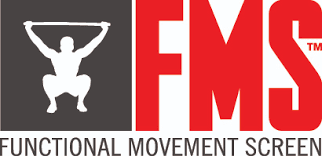
The condition may conjure up images of elderly folks complaining about creaky knees, aching hips, and using hand cream to help reduce wrist and finger joint pain. However, arthritis is abroad topic, and a condition that has existed since the beginning of humankind.
In fact, arthritis has been around since the time of the Neanderthals and even observed on human skeletal remains thousands of years old. Arthritis describes a condition characterized by joint deformities, stiffness, and joint pain. Any joint in the body can develop this! Although the condition is stereotyped to older adults, it can affect people of all ages, including children and teenagers. It is non-discriminatory and affects people from all backgrounds, all lifestyles, and all health conditions.
Arthritis can also be the result of other conditions. This type of secondary arthritis can occur
due to joint infection, auto-immune or auto-inflammatory processes such as ankylosing
spondylitis and rheumatoid arthritis, systemic lupus erythematosus, Lyme disease, celiac
disease, reactive arthritis, psoriasis, and crystal deposition diseases such as gout. This makes
arthritis a complex topic with many types and variations. Arthritis is not as straightforward as
simply degeneration of a joint or a bone surface due to advancing age.
Clinical presentation of arthritis
Because of the multifaceted nature of arthritis, this condition will affect people in different
ways and may have specific symptoms. However, common symptoms of arthritis include:
- Pain
- Swelling of a joint
- Redness (erythema)
- Warmth in a joint
- Stiffness or difficulty moving a joint
Individuals with arthritis, or suspicious of having arthritis, may want to document the time of
day and frequency in which symptoms are experienced. Swelling may occur for several days in a
row and occur more than three times a month. Stiffness of a joint may be experienced after
exercising or at rest, or may be worst first thing in the morning.
Other signs and symptoms may not be directly related to the joints. These include structural
changes to finger and nail pads, weight loss, fatigue, low back pain, skin changes including
rashes and scaly plaques, hair loss, and signs of information that affect multiple joints
throughout the body.
Diagnosing arthritis
Determining what type of arthritis might be more complicated than a visual inspection of an
affected joint (or joints). It is important to take a medical history to determine other health
problems in the past, including a history of trauma or injury, as well as documenting all involved
symptoms and body systems. A family history is also important to take especially if there is a
genetic or familial component to a disease or condition.
A physical exam may also assess your body temperature for fever, analyze your vision and eyes,
look for other rashes or marks on the skin, assess the throat, and evaluate range of motion of
your other joints. Blood tests may check for specific genetic markers or levels of inflammation
in the blood.
Diagnostic procedures may also include taking imaging. X-rays and MRI are commonly used to
visualize bone and soft tissue structures, but ultrasound or computer tomography (CT) may also
be utilized to see parts of the body. Arthritis isn’t “one size fits all” diagnosis! Diagnosing the
correct type of arthritis will depend on the type of process happening to the joint or multiple
joints in the body.
Managing arthritis
Patients with arthritis may have different experiences. Symptoms can vary from day to day, and
treatment of management options will vary depending on the type of arthritis that is
diagnosed, the parts of the body affected, and the severity of the degenerative process.
While there is no cure, there are several medical options with good outcomes to manage an
arthritic joint. Staying physically active, self-management techniques, and reducing overall
inflammation in the body can also be beneficial in steering the course of this condition. Pain
reducing medication, weight loss if a person is overweight, and maintaining physical activity are
helpful to reduce pain associated with arthritis. If your arthritic condition requires advanced
treatment due to disease, other interventions may be necessary.
Who should you see for arthritis? If you’re not sure what key strategies to implement about
staying physically active or protecting your joints from unnecessary stress to reduce arthritis,
your Doctor of Chiropractic can help guide your physical activity levels and suggest ergonomic
changes to help your body move better. A family physician may be able to help by suggesting
over-the-counter anti-inflammatory medication or managing possible side effects with stronger
prescriptions.
Arthritic conditions may also be managed alongside another specialist if the cause of arthritis
requires a healthcare team management. Other professionals that may help manage arthritic
conditions include a rheumatologist, orthopedic surgeon, pain specialist, dietitian, physical
therapist, and/or pharmacist.
How we treat arthritis
At Cardinal Chiropractic and Sports Recovery, we take the time to get to know you. Arthritic
pain can vary from person to person, it’s important to take the time to learn about your
symptoms and how they affect your quality and routine of life.
After a thorough examination and diagnosis, if chiropractic care is not the right intervention for
your pain, then we make the referral to another specialist. Depending on the severity and
complexity of your case, another person may be added to your healthcare management team
to facilitate you feeling and moving better.
If you or someone you know is suffering from arthritis, give our office a call to schedule an
appointment rather than wait to see if the pain improves or goes away. Our chiropractic office
has managed many people with knee pain move better, live healthier, and enjoy a pain-free life!
If you want a same-day appointment for your pain, call our office at 336-270-3050 or schedule online.



